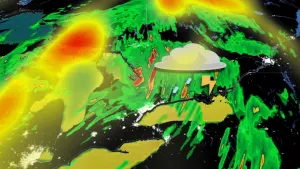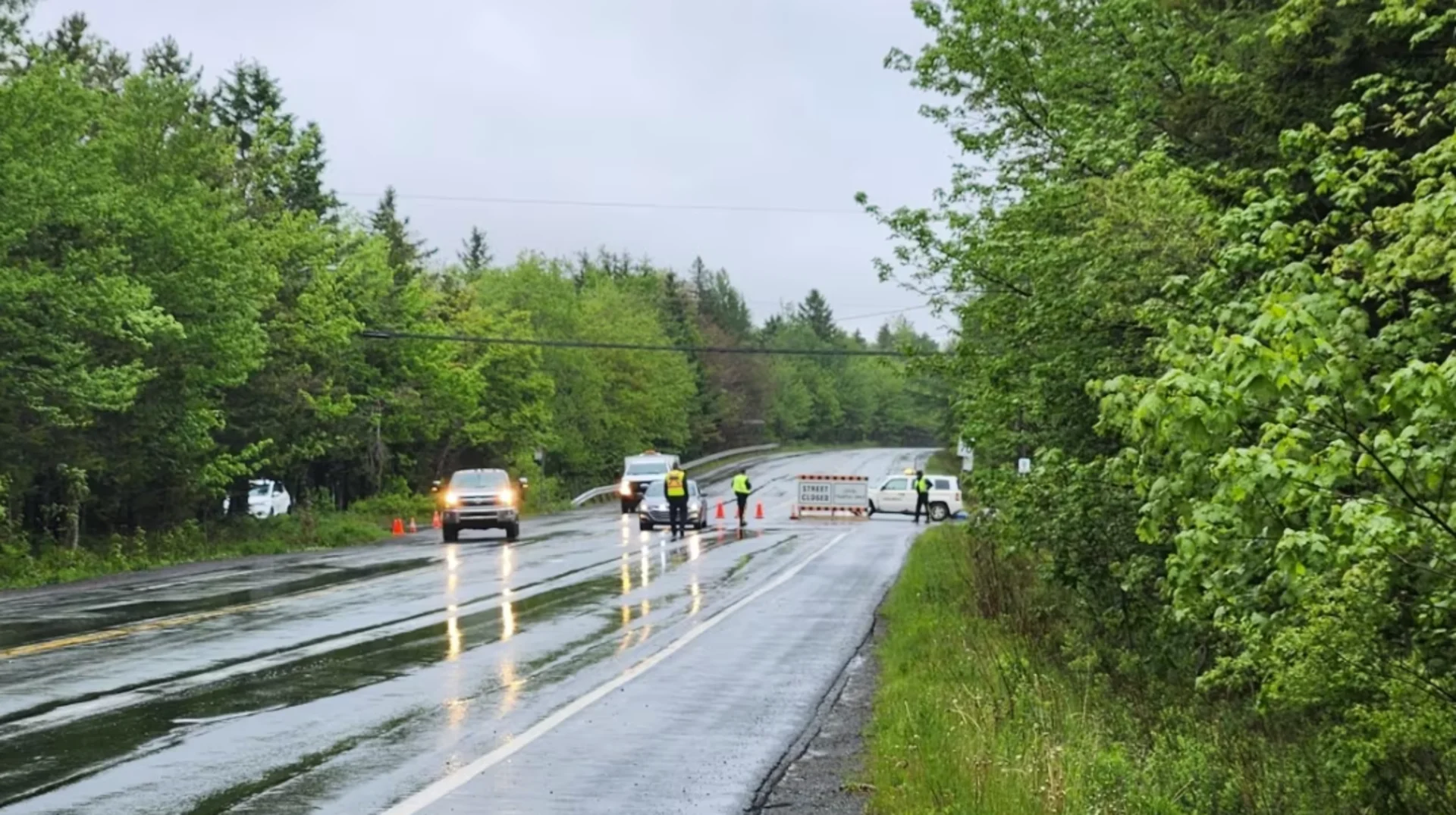
Returning home after a wildfire: What evacuees need to know
Visit The Weather Network's wildfire hub to keep up with the latest on the active start to wildfire season across Canada.
As residents displaced due to the wildfires near Halifax begin to return, they're being advised to take a number of steps to ensure their homes are safe.
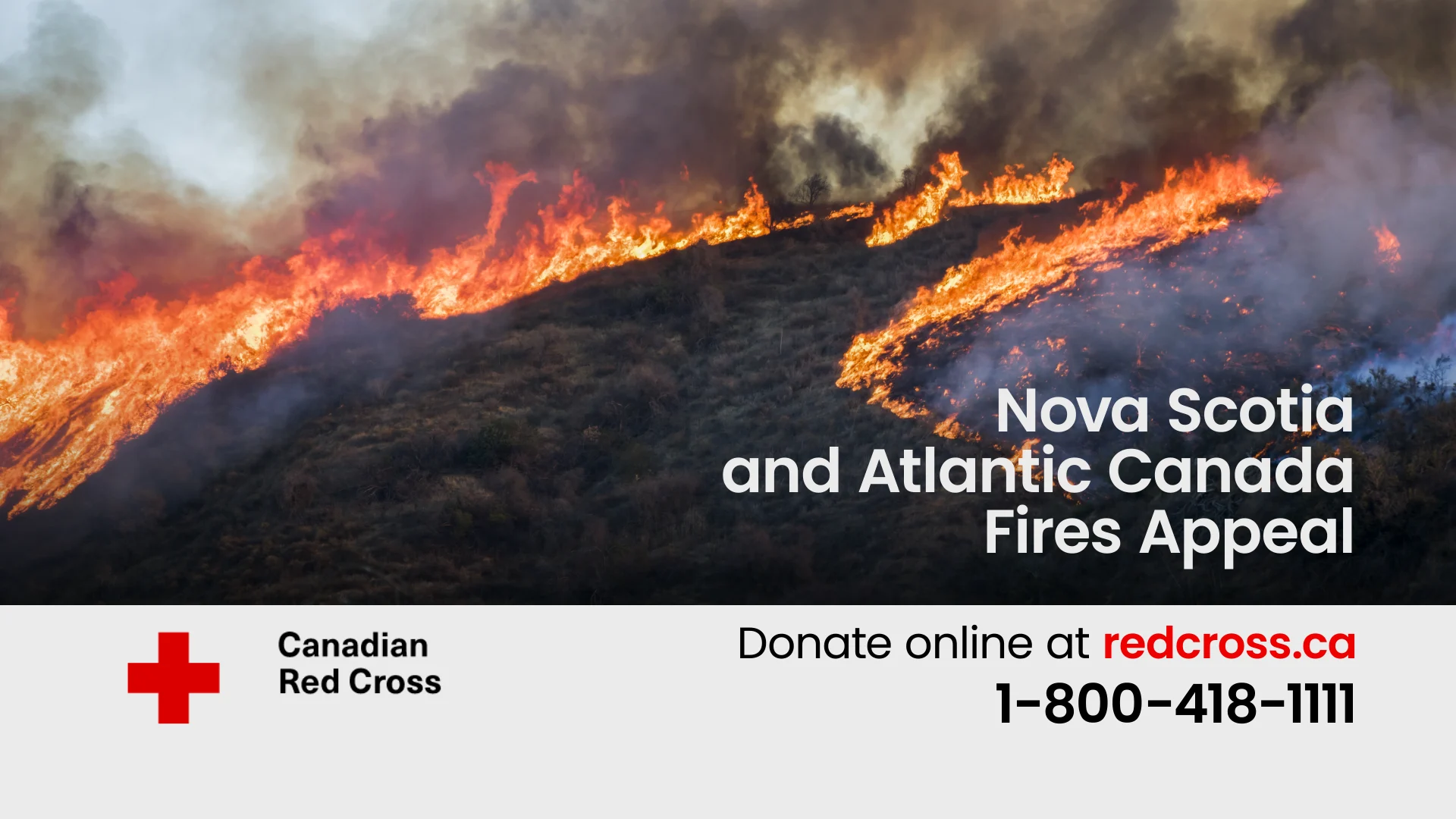
The province warns that properties could have been affected by smoke, soot, ash and runoff water being used to fight the blaze.
The municipality is taking a phased approach to allowing evacuees home. Phase 1 residents have already returned, while officials said Sunday those in Phase 2 areas could expect to go home in the next few days.
Phase 3 evacuees — 4,886 people in Upper Tantallon, Hammonds Plains and Pockwock — were expected to still be out of their homes for another 10 to 14 days.
Well-water safety
It's important not to drink, cook or bath with your well water until you have confirmed it is safe, although it's OK to use it for flushing toilets and cleaning.
Elizabeth Kennedy, director of water programs with Nova Scotia's Environment and Climate Change Department, said all residents should flush and disinfect their wells before taking a sample for testing.
Flushing involves running your taps until they run clear. A step-by-step guide on flushing and disinfecting your well with bleach can be found here.
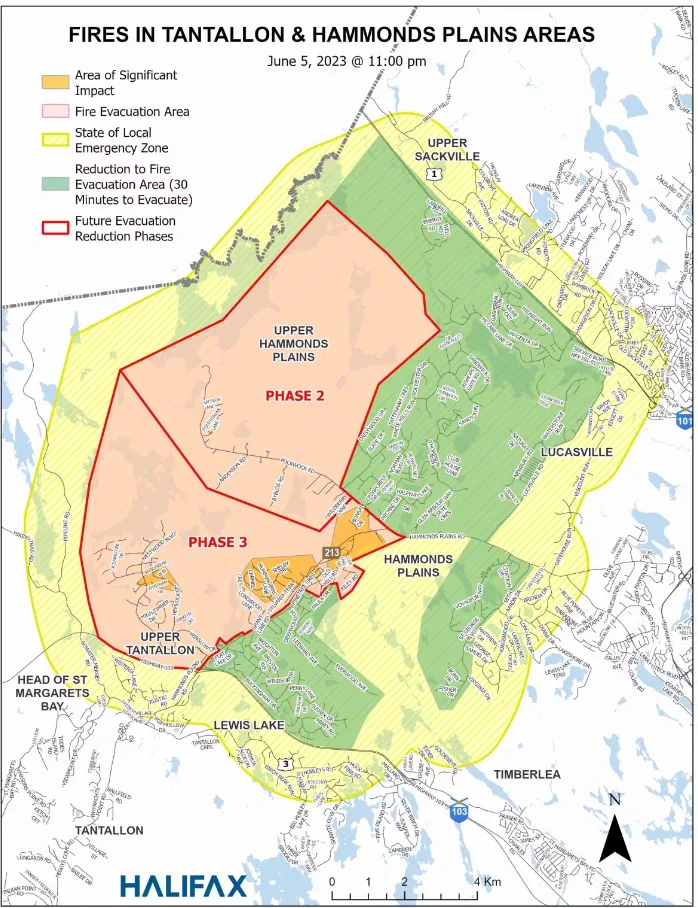
A map shows the fire evacuation area and the local state of emergency area, as of 11 a.m. AT on Monday. (Halifax Regional Municipality)
RELATED: 'Beautiful rainy day': Shelburne County fire out of control, but optimism rises
But Kennedy noted that for areas that have no fire damage, the risk of well water being contaminated isn't really any higher than if you were on vacation, when water in your well sits for an extended period.
"We want people to feel comfortable and safe with their water right now because they don't need any more stress," said Kennedy, adding that there are two tests: one for bacteria and another for chemicals.
WATCH: Tips to help protect yourself from wildfire smoke
"A lot of people don't even test their wells, so if you haven't tested for chemicals in a couple of years, it would be a really great idea to do that now while you're sampling."
Premier Tim Houston said homeowners affected by the evacuation orders will be able to pick up test kits starting Tuesday, and that the province will cover the cost.
The kits will be available at the fire station at 2050 Hammonds Plains Rd. and at Environment and Climate Change regional offices in Bridgewater and Yarmouth. More locations are expected to be added, he said.
The bottles used for testing are typically provided by the Nova Scotia Health Authority, and must be picked up and dropped off at a testing laboratory. A bacteria test costs between $30 and $50, while testing for chemicals can run from $200 to $300, according to the province.
More information about well-water testing can be found here.
The municipality said clean water supplies will be made available to all affected neighbourhoods.
Halifax Water has so far set up water filling stations in the following locations:
134 Micmac Dr. – Micmac Drive Park.
290 White Hills Run – Madeline Symonds Middle School.
297 Pockwock Rd. – White Hills Care Centre.
711 Pockwock Rd. – Upper Hammonds Plains Community Centre.
Kennedy said there is a lower risk to the drinking water at homes in areas where evacuation orders have been lifted. She said if people had pre-existing issues with their wells, they may be more susceptible to contaminants.
WATCH: N.S. dog trainer evacuates 18 dogs during wildfire chaos
DON'T MISS: Top five ways human-caused wildfires start
Inside your home
The province recommends getting the air moving inside your house by opening your windows and using fans — but only if there is no smoke or air-quality advisory for your area. There were no air-quality alerts in effect for the Halifax area on Monday.
To help with air circulation, you can replace your furnace filter. The province recommends checking and changing the filter often as construction and cleanup continues in your home and community.
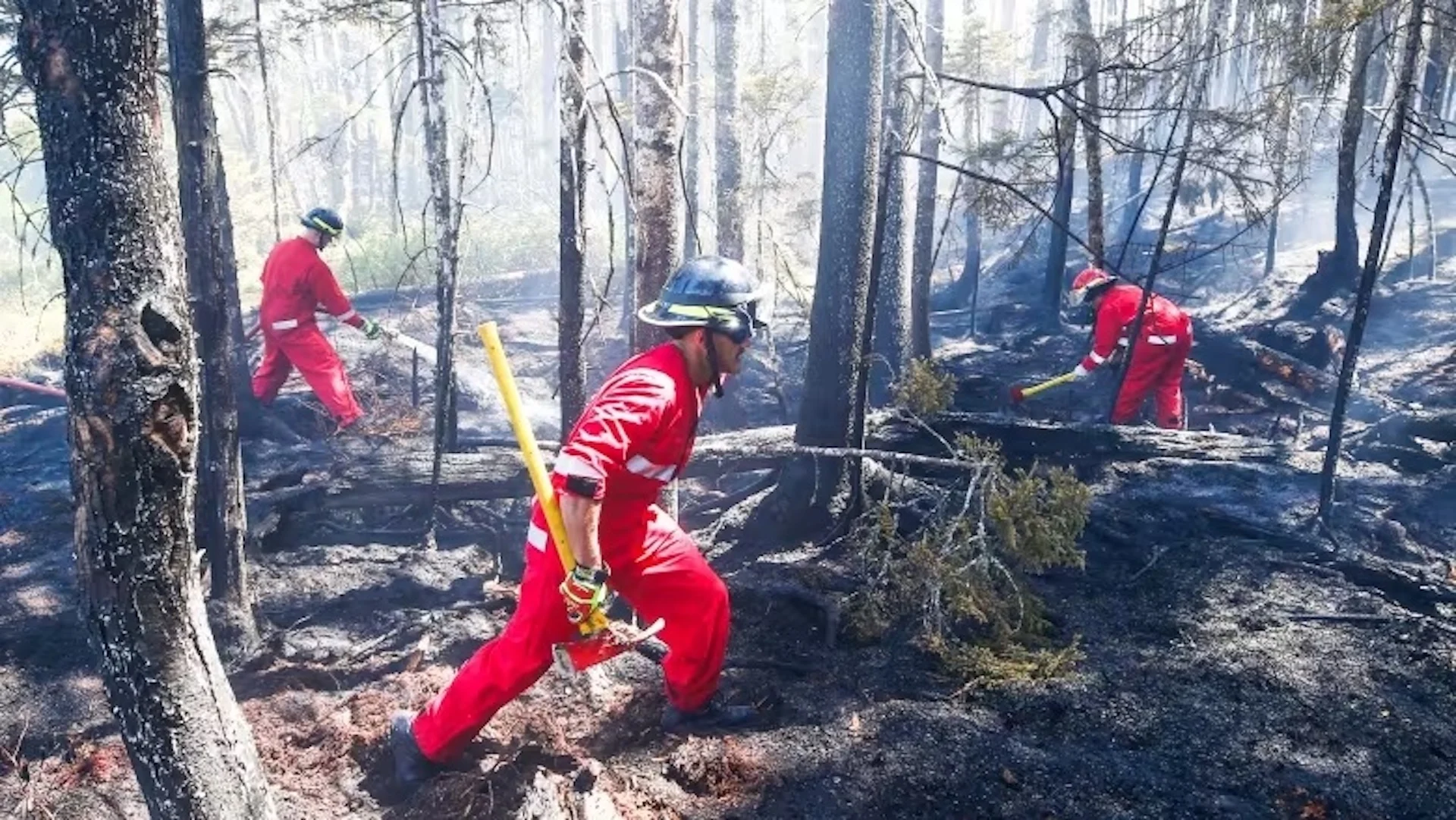
Three Halifax Regional Fire and Emergency firefighters work to put out fires in the Upper Tantallon area on May 30. (Communications Nova Scotia)
Residents could also have their ducts and air conditioning systems cleaned by a professional, and use a portable air cleaner with a high-efficiency particulate air filter to remove any small particles.
Wash all surfaces inside your home with a mild detergent and rinse thoroughly. Only vacuum with a unit that has a HEPA filter, as using unfiltered vacuums will just move the ash and soot around your home.
If a pet has died inside your home, use protective equipment like gloves to remove the remains, secure them so they do not attract other pets or other animals, and contact your veterinarian or the municipality about disposal.
Getting rid of food waste
The municipality has said it will provide drop-off bins to allow for the prompt disposal of spoiled food. A guide on determining whether food is spoiled can be found here. If you don't know how long your power was out, dispose of all perishable food.
The waste bins for those in Phase 1 areas will remain in place until Tuesday evening. Drop-off locations, which are open from 8 a.m. to 8 p.m, are as follows:
20 Greenhill Rd. – Tennis courts.
19 Glen Arbour Way – Eisenhower Park.
446 Sandwick Dr. – Sandwick Park.
1452 White Hills Run – White Hills Park.
120 Cedarcrest Dr. – Salty Dips Park.
134 Micmac Dr. – Micmac Park.
Packaged food is permitted, but garbage and leaf or yard waste is not. Glass jars with the contents still inside must be kept separate and placed in totes that are on-site.
Residents who need to dispose of their refrigerators and freezers are asked to remove the contents, contact 311 to submit a request to remove the chlorofluorocarbons (CFCs), and place the item at their curbside for their next regular garbage collection day once the CFCs have been removed.
Yard cleanup
When entering your yard, there may be soot, ash and other fire debris, so you may want to wet it down. This can lower the risk of breathing in soot and ash particles.
It's also a good idea to wear personal protective equipment when cleaning up your yard, such as gloves, boots, eye protection, head protection and a mask such as an N95 or KN95.
Homeowners are also encouraged to have a technician inspect your oil tank to look for any visible damage, if you're near an area with fire damage. If fuel is visible on the ground, contain the spill by building a small berm or placing absorbent material like cat litter on the area.
Click here for the province's full rundown of considerations to make when returning to your home after a wildfire.
Where to get information
The Canada Games Centre returned to its regular programming and hours on Monday, and was no longer being used as a comfort or evacuation centre.
Residents in the areas of significant impact can visit the Captain William Spry Community Centre on Tuesday between 9 a.m. and 3:30 p.m. to speak with municipal staff about the status of their property.
Photos of affected properties will be available to residents in the area of significant impact. The municipality does not have photos of homes outside of that area.
Representatives from major insurance companies will be available to speak with affected residents on Monday at the Canada Games Centre from 9 a.m. to 4 p.m.
The Black Point and Area Community Centre will remain open as a comfort centre from 9 a.m. to 7:30 p.m. daily until further notice.
Municipal parks and trails, except those in areas where there are evacuation orders, were open on Monday.
Fire crews still on scene
Halifax Regional Fire and Emergency crews remained on the scene in the Upper Tantallon area on Monday.
Although the fire is contained, hotspots and flare-ups continued to pose a safety risk.
Still, the municipality is moving into a recovery phase, which includes soil and air-quality testing.
The municipality said 16,492 residents were forced from their homes at the peak of the wildfires.
WATCH: Donations flood in after heartwarming N.S. evacuation story
Thumbnail image courtesy of Haley Ryan/CBC.
This article, written by Aly Thomson, was originally published for CBC News.







